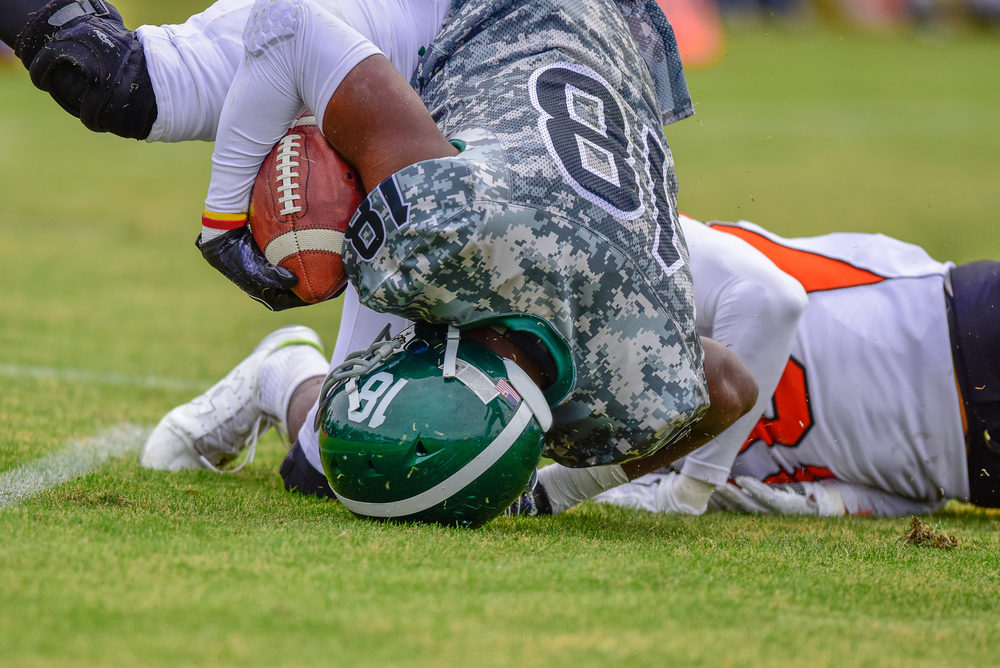
Between 1.7 and 3 million sports- and recreation-related concussions happen each year, according to the University of Pittsburgh Medical Center. Two in 10 high school athletes who play contact sports—including soccer and lacrosse—will get a concussion in a year.
It’s common knowledge that repeated concussions can cause lasting brain trauma. But according to a recently published study, it’s not only the number of concussions that is of concern but the collective force of all the head impacts suffered.
It’s Not the Number of Concussions, but the Collective Force of the Impacts
For the study, researchers gathered data from over 600 football-playing brain donors. They looked at football helmet sensor data, player concussion count, athletic positions, years of football, estimated cumulative head impacts, and more.
They found that the number of diagnosed concussions alone was not associated with the risk of chronic traumatic encephalopathy (CTE). CTE is a progressive and fatal brain disease associated with repeated traumatic brain injuries, including concussions and blows to the head.
Instead, the subjects’ odds of developing CTE were related to how many head impacts they suffered and how hard those impacts were.
Senior study author Jesse Mez, MD, MS, Associate Professor at the BU Chobanian and Avedisian School of Medicine and Co-Director of Clinical Research at the BU CTE Center, noted that the results “provide additional evidence that repeated nonconcussive injuries are associated with CTE pathology. This is in contrast to the emphasis on concussions that is often discussed in the medical and lay literature.”
CTE Causes Symptoms Similar to Other Forms of Dementia
Athletes, military veterans, and others with a history of repetitive brain trauma are at risk for CTE. Earlier this year, the Boston University CTE Center announced that they had diagnosed 345 former NFL players with the disease out of 376 former players studied (91.7 percent).
By comparison, only one of 164 brains of men and women donated to the Framingham Heart Study had CTE. That lone CTE case was a former college football player.
Though the prevalence of CTE among football players and other athletes remains uncertain—because the disease can only be diagnosed after death—scientists believe that repeated head impacts appear to be the chief risk factor.
CTE is associated with memory and thinking problems, confusion, personality changes, and/or erratic behavior. Doctors can use a patient’s medical history, mental status testing, brain imaging, and neurological exams to rule out other potential causes of the disease, which can help them make their best guess on a diagnosis.
There is no cure for CTE, but medications can be used to temporarily treat the symptoms.
Improved Safety Equipment Might Help
As scientists learn more about head impacts and how they affect the brain, the hope is that changes can be made in sports to help protect student and professional athletes.
The researchers of this study noted that their results if validated, “could be used to identify changes to policy or gameplay that might limit CTE risk by decreasing cumulative exposure, such as by limiting the duration of exposure, the number of exposures, and the magnitude of those exposures.”
UC College of Engineering and Applied Science Professor Eric Nauman, who studies how to prevent concussions in contact sports, suggested that improved safety equipment could also help. He co-authored a study on helmets and found that even modest design changes could have profound benefits for players.

Exclusively focused on representing plaintiffs—especially in mass tort litigation—Roopal Luhana prides herself on providing unsurpassed professional legal services in pursuit of the specific goals of her clients and their families. While she handles complex cases nationwide on behalf of consumers, Ms. Luhana resides with her family in Brooklyn, New York.










Comments for this article are closed.